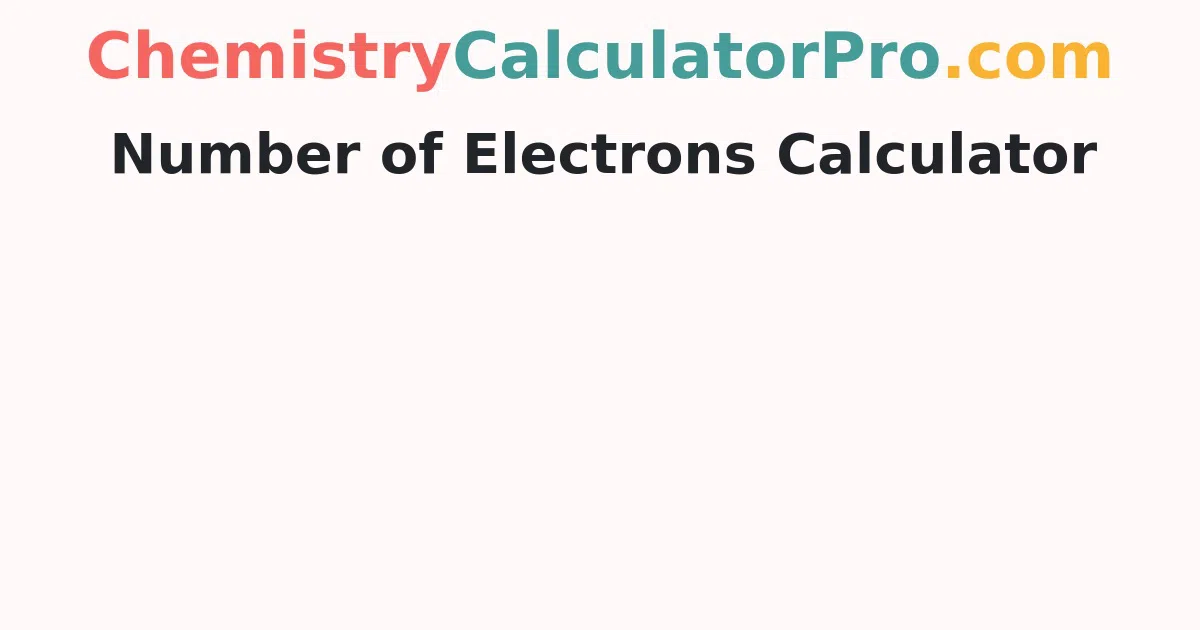Number of Electrons Calculator
Determine the number of electrons in a shell easily taking help of the quick online No. of Electrons Calculator. Simply type in the inputs as specified and tap on the calculate button to obtain the electrons within easily.
What are Electrons?
Subatomic particles with a charge of -1 are known as electrons. The charge carried by an electron is the same as the charge carried by a proton (but has an opposite sign).
Electrically neutral atoms/molecules must therefore have the same number of protons and electrons. Even though the magnitude of protons' and electrons' charges are the same, an electron's size and mass are significantly smaller than a proton's (an electron's mass is roughly 1/1836 that of a proton).
Charge of Electrons
An electron is a negatively charged particle. The negative charge has a magnitude of 1.602 10^-19 coulomb. The mass of an electron is 1/1837 that of a proton.
What is the Mass of Electrons?
The mass of an electron is 9.10938356 10^-31 kilograms. The electron has a very small mass when compared to the proton.
Because of their small size and mass, quantum mechanics, rather than classical mechanics, is a better fit for studying electron properties. This is because, at the quantum scale, matter behaves differently. According to Heisenberg's uncertainty principle, the uncertainty associated with an electron's position and velocity is far greater than that associated with a proton or neutron. Atomic orbitals, which can be viewed as zones surrounding the nucleus where the likelihood of finding a certain electron is highest, are where electrons are distributed around the nuclei of atoms.
FAQ on Number of Electrons
1. Is the mass of protons and electrons the same?
Electrons are a type of negative-charged subatomic particle. Although protons and neutrons have roughly the same mass as electrons, they are both far heavier (approximately 2,000 times as massive as an electron). A proton's positive charge is the same as an electron's negative charge.
2. Do electrons have a positive or negative charge?
Element atoms are neutral because a proton has a positive charge (+) and an electron has a negative charge (-), with all positive charges canceling out all negative charges. The number of protons, neutrons, and electrons found in an atom differs from one to another.
3. Who named Electron?
In 1891, G. Johnstone Stoney used the name "electron" to characterize the unit of charge discovered in investigations of electric current transmission via chemicals. Joseph Larmor, a Cambridge classmate of J.J. Thomson's, used the phrase in this sense.
4. Who Was the First to Discover the Electron?
J.J. Thomson, an English physicist, discovered the electron in 1897 through research using cathode ray tubes.
5. What happened to the electrons?
Electrons are found outside the nucleus, unlike protons and neutrons, which are contained inside the nucleus at the heart of the atom. Negative electrons are drawn to the positive nucleus by the attraction of opposite electric charges.
